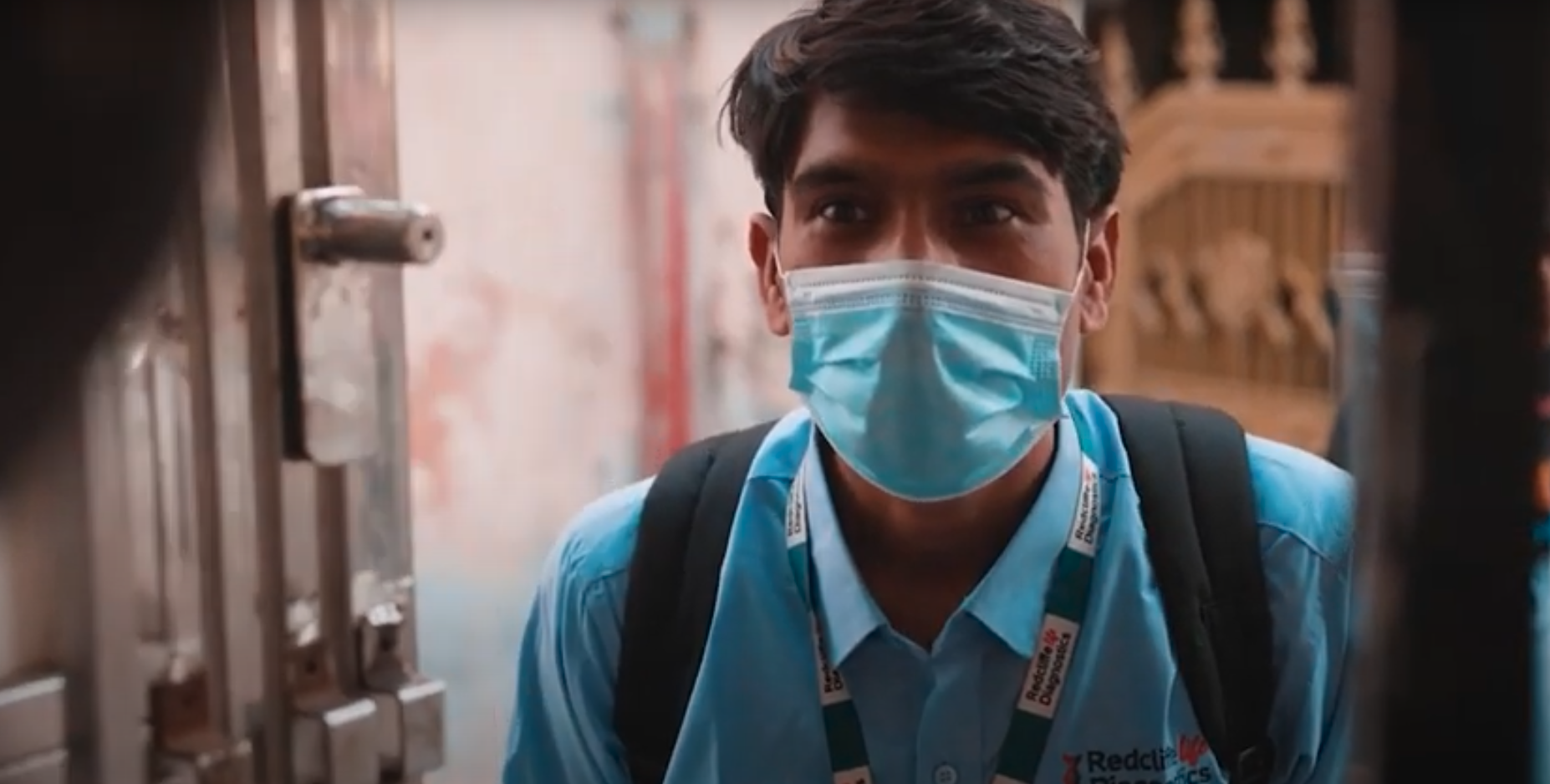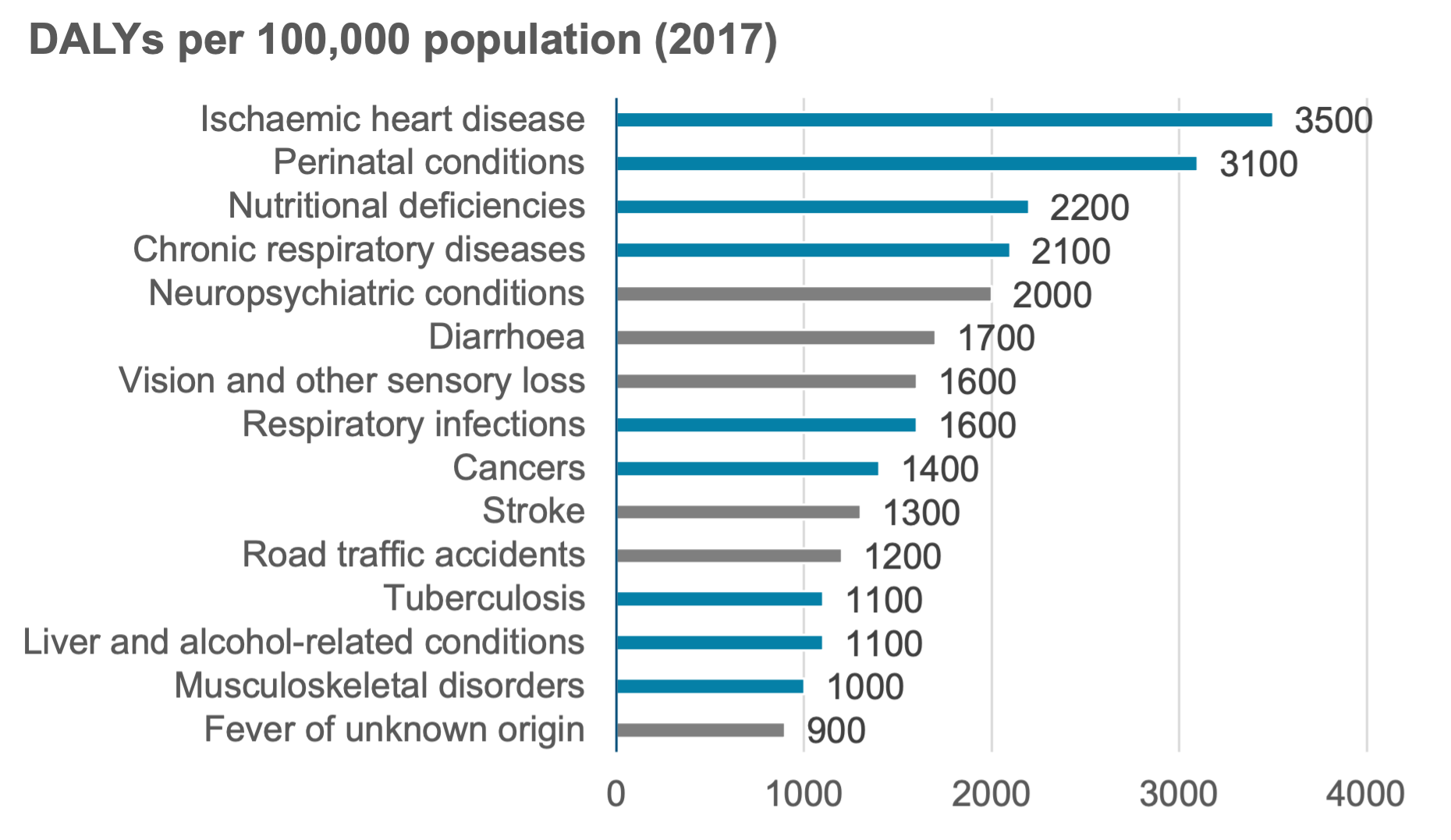
Research
Deepening impact with DALYs
How healthcare investors track economic benefits for individual patientsAuthors:
Biju Mohandas, Partner, LeapFrog Investments
Stephen Farrington-Bell, Partner, Health Strategy and Investment, PA Consulting
Vikram Popli, Director of Investments, LeapFrog Investments
Niyati Dangi, Profit with Purpose Analyst, LeapFrog Investments
Impact measurement for private healthcare investments remains at a nascent state compared with similar tracking across public health systems. Impact investing, an industry a little over 15 years old, has traditionally focused on reach and volume metrics through systems like IRIS+. These metrics – like the number of patients screened for a medical condition by a health provider, or the percentage of an organisation’s clients receiving effective healthcare in a chosen time period – offer a useful overall view of the health impact of an investment. However, more sophisticated metrics are required to deliver a deeper analysis of the comparative economic impact and health outcomes of various interventions.
Governments and major health programs have developed multiple social and economic value approaches that offer a superior understanding of the impacts of health investments and are used routinely to assess large health programs, although are yet to be widely adopted by impact investors. In particular, the related notions of Disability Adjusted Life Years (DALYs) and Quality Adjusted Life Years (QALYs) have proven powerful tools in the assessment of health investments across multiple jurisdictions, including in Low- and Middle-Income Countries (LMICs). Additionally, the Social Return on Investment (SROI) is also a well-recognized methodology that assigns financial value to the generated social impact and creates a common language to evaluate healthcare interventions.
Working with PA Consulting, a global innovation and transformation consultancy, LeapFrog Investments tested these approaches (DALYs and SROI) with one of their portfolio companies, the fast-growing Indian diagnostics business Redcliffe Labs. Preliminary results suggest that these methods can translate well into private investments. In particular, the widely accepted DALY metric allows for a robust understanding of the health and economic impacts of Redcliffe’s complex suit of diagnostic test spanning multiple disease categories, as well as helping to develop comparative analysis between the cost of various private and public heath interventions for the same diseases. Simultaneously, SROI also helps in demonstrating the broader social benefit of LeapFrog’s investment in Redcliffe.
The importance of these metrics is amplified in emerging markets like India, where the burden of non-communicable diseases (NCD) is near epidemic proportions and threatens to overwhelm the resources of both public and private health systems. For the NCD epidemic, both public and private health providers have an important role to play in broadening the reach of services like diagnostics, and driving innovations that lower cost and increase convenience. Redcliffe Labs’ focus on affordable and convenient diagnostic services is a frontline defence against this crisis. The metrics confirm that Redcliffe’s services are among the most cost-effective in reducing the DALY burden in Indian healthcare.
What are the benefits of DALYs and QALYs
Both DALYs and QALYs are used to translate health investments and their impacts into a unified metric that can be used across all disease types and interventions. These standardised metrics can also be conveniently translated into an economic impact through relatively simple methods.
DALYs are the most frequently used metric of the two and are frequently deployed across low- and middle-income countries to identify global health trends and develop health policy. One DALY is equal to the loss of one year of life in perfect health due to disease, or the sum of years of life lost plus years lived in disability/disease. By combining mortality and morbidity into a single metric, DALYs tend to deliver the most intuitive measure of health impacts and can also be translated into an economic impact using an annual measure of per capita economic output, like for instance percentage of GDP per capita.
QALYs are defined as the gain in years of life in perfect health due to an intervention, calculated as the years of life remaining following a treatment or intervention adjusted with a quality-of-life weighting. This measure better reflects a patient centred approach, by focusing on quality of life, and also factoring in the disabling negative side effects of some treatments, however these nuances require richer data resources to achieve accurate calculations.
For robustness, and for measuring diseases like NCDs with higher mortality and morbidity rates, we believe DALYs are a preferred metric to track depth of health impact in private healthcare investments.
About Redcliffe Labs
Redcliffe Labs is a digitally-enabled, affordable and convenient omni-channel diagnostics service provider operating across 220 cities and towns across India, with 80 labs and 2,000+ walk-in collection centers. The company primarily serves Tier 1/2/3 cities and towns in India, directing customers towards simple treatments that offer low-cost, long-term solutions to common NCDs. Redcliffe’s pricing is c.25-60% lower than similar tests sold by incumbent operators, while providing the convenience of at-home tests. LeapFrog acquired a minority stake in the company in 2022.
Applying DALYs to Redcliffe Labs
Assessing Redcliffe’s DALY impacts required both a top-down and bottom-up approach. The top-down analysis served a dual purpose: to quantify Redcliffe’s potential health impacts and to validate the findings from the bottom-up quantification process. India’s overall DALY burden is significant, estimated at 486 million DALYs. This high figure is in part driven by India’s relatively modest healthcare expenditure when compared to the average among LMICs. Notably, data from the World Bank underscores that while the Covid pandemic bolstered India’s public health spending as a percentage of the gross domestic product (GDP), it continues to lag fellow BRICS nations.
In this context, our research suggested a DALY gap of c. 0.345 per person within India. Redcliffe’s diagnostic tests were found to address 66% of the most prevalent conditions contributing to these DALYs and 49% of the total DALY burden. Consequently, Redcliffe has the ability to address a significant part of the existing DALY gap, estimated at 0.169 per person. Applied across Redcliffe’s unique user base, this corresponds to an estimated 500,000 DALYs for all patients seen by Redcliffe over 5 years.


Applying DALYs to Redcliffe Labs
The bottom-up approach then more systematically assessed the various disease areas targeted by the company’s diagnostic tests, and related patient journeys. First, we developed a Theory of Change supported by a robust logic model to describe how the activities of the company lead to benefits and improved health outcomes for patients, through early diagnosis and treatment. With this understanding, we then utilised data from Redcliffe alongside academic research to support assumptions around treatment efficacy, adherence to treatment and impact on life expectancy.
We calculated DALY metrics generated by Redcliffe interventions in six key disease areas: cancer, thyroid, kidney, liver, diabetes, and cardiovascular disease. This analysis estimated the total DALYs (175,000) and average DALYs per customer (0.09) generated by Redcliffe for patients seen in the year, which fell comfortably below the maximum ranges calculated in our top-down analysis. As this analysis was based on forecasts and various academic assumptions, the quantification included sensitivity analysis and risk adjustment.
We then conducted a comparative literature review wherein we compared results from the pathway level analysis with various academic studies of similar screening programs and diagnostic facilities in India and other LMICs.
Comparing Redcliffe against alternative healthcare investments
The DALY analysis showed that Redcliffe is cost effective when compared with global benchmarks and thresholds. The average cost per DALY averted offered by Redcliffe is c. $200. This compares favourably with the WHO threshold of 1 – 3 times GDP per capita ($2256 – 6,768/DALY), and to more recent thresholds calculated for LMICs of c. $500.
We further conducted a review and comparative analysis of Indian health research that also utilised the DALY methodology and found Redcliffe interventions are amongst the most cost effective in India. This is especially true for cardiovascular disease and diabetes, with cost per DALY averted $166 and $100 respectively.


Estimating the Social Return on Investment (SROI)
We also used data from this analysis to compute the Social Return on Investment (SROI) for LeapFrog’s shareholding in Redcliffe. In public sector terms, an SROI value above 4 is considered an excellent return on investment. LeapFrog’s investment in Redcliffe yielded an SROI value of 4.4, with the Net Present Social Value across 5 years estimated at $220 million. This reinforced the outstanding social returns of the investment, alongside Redcliffe’s strong commercial performance.
Conclusion
This proof-of concept study offered compelling evidence for the cost effectiveness of impact investing in healthcare. The data from Redcliffe, analysed by PA Consulting, serves as a benchmark for what private investment can achieve in healthcare, offering not just profitability but also genuine social impact.
These results also offer insights that Redcliffe Labs can leverage to amplify its impact, for instance by increasing the uptake of tests in areas like diabetes and cardiovascular disease or focusing on enhancing treatment adherence through a spectrum of value-added services.
Finally, our analysis showed that calculating DALYs for Redcliffe and similar private healthcare companies, while complex, is not beyond the capabilities of most impact investors. The ease of making these calculations will continue to increase as data collection and analysis improves across the healthcare sector, allowing private investors to better quantify and track the impact of their investments.
Acknowledgements
Felix Olale, Partner, LeapFrog Investments
Julie Wallace, Head of Impact, LeapFrog Investments
Eshani Shah, Investment Associate, LeapFrog Investments
Beth Stair, Senior Consultant, PA Consulting
Rohit Jalan, Director-Strategy and Corporate Development, Redcliffe Labs
Preeti Aggarwal, Chief Marketing Officer, Redcliffe Labs


